Indian Diaspora: Know the Great Jubilant Story of Migration
The Indian diaspora is the large population of people of Indian origin who have migrated from India to other parts of the world, typically for work or study. As of 2019, an estimated 18 million Indians lived abroad, making them the world’s largest diaspora population. The vast majority of Indians live in developed countries such as the United States (4 million), the United Kingdom (1.4 million), Canada (1 million), and Australia (0.7 million). However, the number of Indians in developing countries such as Qatar (0.5 million), the United Arab Emirates (0.4 million), and Saudi Arabia (0.2 million) is increasing.
Individual reasons for migration vary, but there are some common factors that drive many Indians to leave their home country. Economic opportunities, political instability, and family ties are among them.
The longevity of Indian overseas communities stems from the fact that the majority of their population emigrated because of opportunities abroad, rather than because they were forced to.
The birthplace of the world’s largest migrant population
Slavery was abolished in most parts of the British Empire in 1833, transforming the colonial system by replacing slavery with indentured servitude. The United Kingdom relocated millions of bonded Indian workers to colonies in Africa, Asia, and the Caribbean over the next eight decades.
Indians have a long history of migration throughout the world. People from Punjab, Rajasthan, Gujarat, and the cities of Delhi, Allahabad, and Bombay migrated to Central Asia, the Caucasus, and Russia in the mid-sixteenth century. They were known as “Multanis,” “Shikarpuris,” and “Banias.”

It was known as the “Indian Merchant Diaspora” (Levy, 2002, 2005: 1–31). Many Indians visited England and other European countries during the British rule in India.
When India gained independence, many Indians emigrated to European countries, primarily for higher education or to learn industrial know-how.
Recently, the Middle East and Western countries have emerged as popular international destinations for Indians.

The great Indian journey
The story of the Indian diaspora, their trials and tribulations, hopes and dreams, is told in The Great Indian Journey. It is the story of a people forced to flee their homeland in search of a better life.
The Indian diaspora is one of the world’s largest and most diverse. They can be found all over the world, from North America to Africa, from Europe to Asia.

So, where have these Indians gone? The UAE appears to have been the most welcoming, with the most Indians in 2020. (34 lakh). The oil-rich country provided excellent opportunities for both skilled and semi-skilled workers to earn a living.
The United States was the next most appealing destination for Indians travelling abroad. The rapid growth of technology and digital services in the United States since the turn of the century required a large number of educated and English-speaking workers, and Indians were more than willing to fill the void. In 2020, approximately 27 lakh Indians lived in the United States. Saudi Arabia was the next most popular emigrant destination in 2020, accounting for 25 lakh Indians.
Over the last three decades, the number of Indians living in the UAE, the United States, and Saudi Arabia has steadily increased.
Other countries with more than a lakh Indians in 2020 include Oman, Kuwait, Qatar, the United Kingdom, Canada, Australia, and Nepal.
Theirs is a story of perseverance, struggle, and success. It is the story of a people who overcame many obstacles to start a new life for themselves and their families.
Despite the difficulties, the Indian diaspora has thrived. They have gone on to become successful entrepreneurs, doctors, engineers, scientists, and educators. They have made significant contributions to their adopted countries and have become a part of the fabric of global society.



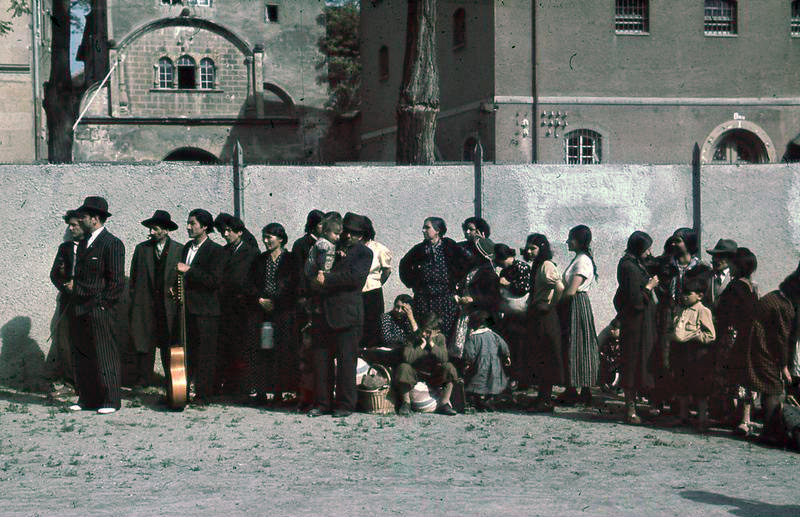

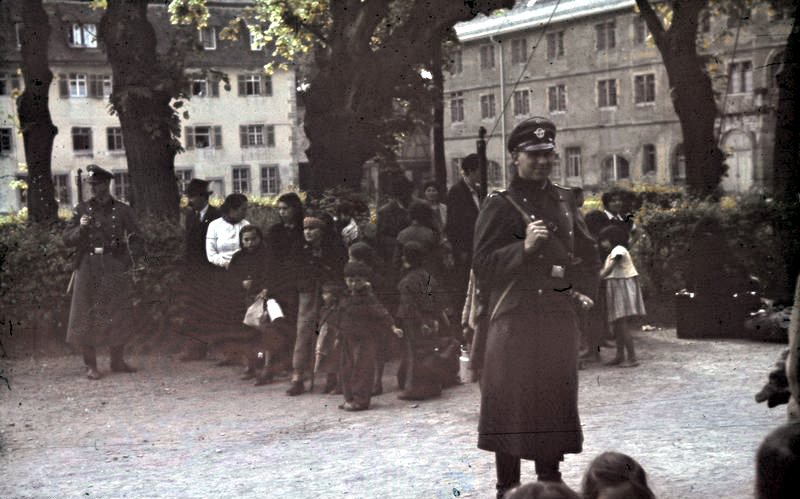

The great Indian journey is an uplifting tale of human perseverance and achievement. It’s a story worth telling and celebrating.
Despite their diverse backgrounds, Indians living abroad have developed a strong sense of community and maintained ties to their homeland.
The Indian government has long recognised the potential of its diaspora and has attempted to capitalise on it for both economic and political gain. It has launched initiatives in recent years to engage with Indians abroad and promote investment in India. Although these efforts have yielded mixed results, the diaspora remains an important part of the country’s identity.
Indians have been migrating to various parts of the world for thousands of years. Indians and Indian kingdoms have spread across the seas since time immemorial. Some of the earliest Indian emigration can be traced back to trade and religious contacts with civilizations such as the Greeks. “The Pala’s of Bengal were in contact with the Sailendra kings of Indonesia,” Tinker (1977: 1) writes.
The British rule and its impact on Indian economic backwardness, which resulted in unemployment, lasted from the 1830s to the 1930s. Slavery was abolished by the British in the 1830s, resulting in a critical labour shortage on British and European colonies’ sugar plantations, giving birth to the contract form of labour from India and other parts of Asia.
Then the indenture system was introduced, in which a worker becomes labelled as “state regulated labor” for a period of five years, with the employer having the right to refuse to change the employer or employment, fix wages, and so on (Kondapi 1951). Apart from indentured labour, there were also migrants who paid their own way and moved outside, such as students, merchants, and politically significant individuals during the colonial period.
The post-colonial period was marked by migrants from the middle class who were proficient in English instruction. The educational system in post-independence India was modelled after the British and American educational systems, which produced professionals who outnumbered the available jobs. The available opportunities abroad enticed all prospective applicants. This resulted in professional migration to the West’s developed nations, primarily the United States, the United Kingdom, and some in Europe and Australia. India gradually advanced, with improved education systems and rapid changes in transportation and communication. More Indians were highly skilled, with dual degrees in fields such as medicine, science, engineering, and so on.
According to data from the United Nations Department of Economic Affairs, the number of Indians travelling as international migrants worldwide increased 143% from 7 million in 1990.
South Asian Hong Kong Muslims, Canadian Sikhs, Punjabi Mexican Californians, Gujarati East Africans now settled in the United States via England, South African Hindus, and so on comprise the Indian community.
The question now is, “What exactly is an Indian?” How can we identify the Indian Diaspora community as “Indian”? When we consider the term “Indian Diaspora,” at least in America, the Indian community has occupied such a position of considerable privilege that many Indians may overlook the moment of recognition that “Indianness” as opposed to “Americanness” As a result of the declining economy and the clustering of Indians for various reasons, they have become targets of racial attacks.
The “native dress” of Indian women with the vermillion dot on the forehead is easily interpreted as the embodiment of an otherness that has led a gang of white teenagers to commit crime in New Jersey.
Native Indian costumes have been scrutinised and debated from various perspectives in North America and the United Kingdom. Sikhs in these areas have insisted on being exempted from the law requiring bicyclists and motorcyclists to wear helmets because such helmets cannot be worn over the turbans. Kirpan has been a source of contention in Californian schools.
However, in general, Indian communities that have settled in any part of the world maintain some sort of tenuous connection with the motherland. An Indian citizen who stays abroad as an immigrant with any type of visa will celebrate Indian festivals and prayers as well as their own cultures and traditions, thoroughly enjoying it and remaining connected to the motherland.
When their children are born abroad and have never visited India, their parents try to instil as much Indian culture and tradition as possible.
The Bollywood
The most likely bonding with the Indian Diaspora is through “Bollywood.” Bollywood films play an important role in Indian diasporic communities, and their success since the late 1990s has garnered a lot of attention. Bollywood is to the Middle East and East Africa what Hollywood is to Western Europe. It is worth noting that Hindi films are available in grocery and video stores in the United States. They frequently have subtitles in Arabic or other languages that the Indian Diaspora in the United States does not understand!

The growing popularity of Indian films among the Indian diaspora has also helped to rekindle “Indianness” among this demographic.
These cultural exports, many of which depict diasporic Indian life, serve as a medium for exploring a common bond among strangers in another country.
The Social Media
The internet revolution and media have resulted in new global networking of people via Facebook, WhatsApp, and Twitter. The Indian diaspora, which numbers over 20 million people living outside India, communicates and connects with their homeland. Indian “arranged marriage” can add to the “otherness” of Indian communities in the United States. Matrimonial ads will be published in the newspapers published by Indian communities. Though it assists Indians in locating their community, it once again demonstrates “otherness” in relation to “Americans.” This has now spread to social media and electronic platforms.
Before becoming one of the world’s largest for overseas emigration, the Indian diaspora went through several stages.
- The ancient and the medieval period
- The colonial period
- The post-colonial phases
(a) The ancient and medieval period
Around the first century AD, the first instances of Indian migration and diaspora were recorded. The first migration from India occurred when a group of Gipsy people emigrated from India to the northwest and eventually settled in Eastern Europe.
Indians have been migrating to various parts of the world for thousands of years. Indians and Indian kingdoms have spread across the seas since time immemorial. Some of the earliest Indian emigration can be traced back to trade and religious contacts with civilizations such as the Greeks. “The Pala’s of Bengal were in contact with the Sailendra kings of Indonesia,” Tinker (1977: 1) writes.
The Indian diaspora began seeking unskilled labour in the Middle Ages. An Indian merchant colony was established in the Volga-Tsardom of Russia as early as 1610. In the 18th century, Russian chroniclers reported the presence of Hindu traders in Moscow and St. Petersburg.
An enormous number of people began to move during the early nineteenth century for unskilled labour and highly skilled labour after the mid-1960s, which is said to be the first wave of the Indian diaspora.
(b) The colonial period
The British rule and its impact on Indian economic backwardness, which resulted in unemployment, lasted from the 1830s to the 1930s. Slavery was abolished by the British in the 1830s, resulting in a critical labour shortage on British and European colonies’ sugar plantations, giving birth to the contract form of labour from India and other parts of Asia.
Then the indenture system was introduced, in which a worker becomes labelled as “state regulated labor” for a period of five years, with the employer having the right to refuse to change the employer or employment, fix wages, and so on (Kondapi 1951). Apart from indentured labour, there were also migrants who paid their own way and moved outside, such as students, merchants, and politically significant individuals during the colonial period.
Indian indentured labour was transferred to British colonies around the world beginning in the nineteenth century. The presence of the modern Indian diaspora all over the world can be linked to the incorporation of the British Empire in India.
Many Gujarati traders left for East Africa in large numbers in the early twentieth century, as if imitating their forefathers.
Fiji, Mauritius, Guyana, Trinidad, Surinam, Malaysia, South Africa, Sri Lanka, and New Zealand all have distinct Indian imprints.
Over two million Indian men fought for the empire in a number of foreign wars, including the Boer War and the two World Wars, and some stayed behind to claim the land on which they had fought as their own.
(c) The post-colonial period
During the post-World War II period, the majority of Indian labour and professionals dispersed, creating a global phenomenon. Indians and other South Asians helped rebuild Europe after the war, particularly in the United Kingdom and the Netherlands. In recent years, unskilled labourers from South Asia have transformed the physical landscape of much of the Middle East. Indians have made a visible presence in professions in countries such as the United States, Canada, and Australia.
The post-colonial period was marked by migrants from the middle class who were proficient in English instruction. The educational system in post-independence India was modelled after the British and American educational systems, which produced professionals who outnumbered the available jobs.
The available opportunities abroad enticed all prospective applicants. This resulted in professional migration to the West’s developed nations, primarily the United States, the United Kingdom, and some in Europe and Australia.
India gradually advanced, with improved education systems and rapid changes in transportation and communication. More Indians were highly skilled, with dual degrees in fields such as medicine, science, engineering, and so on.
Between 1990 and 2017, India experienced waves of skilled and unskilled labour emigration.
2nd World War Diaspora: 6 million
New UN Diaspora Statistics
15.9 million in 2015
17.5 million in 2019
India’s diaspora policy has evolved over time from disconnection to active participation in the country’s emigration process.
Post-War Movement and Partition
The disintegration of the British Empire had far-reaching consequences for India and other former colonies, resulting in one of the world’s largest forced migrations.
Following kinship and friendship ties, many Indians moved to the United Kingdom in subsequent decades, particularly from Punjab. At the time, war-torn Britain was experiencing labour shortages, and as Commonwealth citizens, Indian nationals were free to move to the country. Migration to the United Kingdom became more difficult in the years that followed, as laws passed between 1962 and 1971 imposed new restrictions on movement from other Commonwealth countries. Nonetheless, as of 2020, India was the most common country of birth for immigrants in the United Kingdom.
Labor Migration to the Middle East and West
The third wave of Indian emigration was primarily to the Gulf as a result of massive oil extraction and a construction boom that began in the 1970s. Retail and construction trades such as carpentry, electrical wiring, and masonry have been popular among many migrants without postsecondary education, while those with higher levels of training have gone into sectors such as health care. Kerala, India’s southernmost state, has been responsible for the majority of the migration to the Middle East.
This third wave includes doctors, engineers, financial professionals, and others who are relocating to economically developed countries such as the United States. As of 2016, India had the highest number of postsecondary emigrants in the world, with nearly 3.1 million residing in the 38 countries of the Organization for Economic Cooperation and Development (OECD). Between 2000 and 2010, the number of highly educated Indian emigrants more than doubled.
India is now the most common country of origin for immigrants to the United States. The creation of the H-1B visa for skilled workers in 1990 was also significant; Indian immigrants are consistently among the top recipients of these visas.
Indian immigrants in the United States are more educated and earn more than the general foreign- and native-born populations.
Many Indians have also emigrated to further their education. In 2019, nearly 589,000 Indians studied abroad, with slightly less than one-third studying in the United States. A significant number of people have also travelled to Australia, Canada, and other countries. However, as the COVID-19 pandemic began, Indian international enrollment fell to 261,000 in 2020. Many Indian international students come from cities, the upper and middle classes, and various castes, with backgrounds in economics, engineering, management, and medicine.
Money matters
Indians have the world’s largest migrant population, and their remittances are also the highest. In times of external account crises, this immigrant population provides a good source of funds.
For example, the number of Indians living outside has increased dramatically since the turn of the century. The period of fastest growth was from 2005 to 2010, which was also a period of economic prosperity for India. Rising wealth appears to have emboldened more Indians to seek permanent residence abroad.
According to the United Nations World Migration Report (WMR) 2022, Mexico has the world’s second-largest emigrant population, but it is approximately 70 lakh people less than Indian emigrants. Next on the list are Chinese and Syrian Arab Republic emigrants.
Increased migration benefits India because of remittances sent by overseas Indians and money parked in Indian banks as NRI deposits. Both of these factors contribute to the country’s external balance.
The United States is the world’s leading source of international remittances, accounting for $68 billion of the total. Indians make up 5.5% of the US migrant population.
It is followed by the United Arab Emirates ($43.2 billion) and Saudi Arabia ($34.6 billion). All of these countries have a sizable Indian population.
NRI deposits are another way that Indian emigrants contribute to the rupee and the economy. NRI deposits have increased from $40 billion at the end of 2008 to $139 billion in April 2022, an average annual increase of 9%. Despite the difficulties caused by the pandemic, these deposits have averaged around $140 billion since 2020, indicating that these flows can improve once the effects of the pandemic wear off.
Remittances to India have increased dramatically in recent years, with an estimated $87 billion received through formal channels in 2021.
Remittances from the six Gulf Cooperation Council (GCC) countries—Bahrain, Kuwait, Oman, Qatar, Saudi Arabia, and the United Arab Emirates—have accounted for more than half of all funds sent to India in recent years. In 2021, the United States will account for nearly one-fifth of all remittances to India.
The Rise of Indian Origins as a Global Soft Power
India’s rise as a global soft power can be traced back to the country’s rich migration history. Indians have migrated to all corners of the globe over the centuries in search of better economic opportunities and a higher quality of life.
Today, an estimated 30 million Indians live abroad, constituting the world’s largest diaspora population. The Indian diaspora is highly educated and prosperous, and it has been successful in assimilating into host societies while retaining its cultural identity.
The diaspora has been instrumental in promoting India’s image abroad and strengthening its soft power.
Indian cinema, music, cuisine, and yoga have gained worldwide popularity, and Indians have achieved success in fields such as academia, business, and politics.
The diaspora has also played an important role in bridging the gap between India and its host countries. They have served as cultural ambassadors, promoting cultural understanding and mutual respect.
India wields significant soft power through her historic diaspora communities, the majority of which date back to early mediaeval Indian merchant settlements. These people of Indian ethnic origin are citizens of their host countries, but they have passed down their faith, language, script, cuisine, community institutions, and culture from generation to generation.
They have not only enriched their new homelands, but they have also strengthened the link between their new countries and India through transnational trading and community networks.
In addition to this living legacy, Indian culture is deeply embedded in the architectural, social, and cultural landscapes of the majority of Indo-Pacific nations. For centuries, Banda Aceh, located on the northern tip of Sumatra Island (Indonesia), was considered part of the Indian sphere due to its sizable Indian merchant community and its proximity by sea to India’s Coromandel and Malabar coasts than the rest of the Indonesian archipelago.
The ancient period was not the end of India’s influence. It is still going on today. Islam in South and South East Asia, for example, which was introduced peacefully by Indian Muslim traders during the mediaeval and early modern periods, is noticeably more moderate politically than Islam in West Asia, which arrived by sword.
India’s soft power has remained strong because trading communities circulated between the subcontinent and as far as Japan for trade.People in Indian overseas business communities, such as those in East Africa, continue to recruit manpower and find brides and grooms for their sons and daughters from India.
Given the benefits of India’s 32 million-strong diaspora, the country is well positioned to play a constructive role in the world.
The longevity of Indian overseas communities stems from the fact that the majority of their population emigrated because of opportunities abroad rather than because they were forced to; Indian indentured labour largely returned to India.
India is an enlightened country with a vibrant soft power legacy. The country is acutely aware of the significance of its cultural engagement and recognises that it must exert a little more effort to make its culture appealing to people all over the world. The following concept of “soft power” is unique and essentially natural, and it is consistent with India’s rich history as a country of ideas and thoughts, as well as amicable cultural dissemination.
Soft power gave the impression of an upright hovering sphere and dependability, which inspired developing nations all over the world after seeing India’s position.
India envisions a relatively pluralistic, nonviolent, and liberal government with non-threatening global leadership. Distinguished individuals such as Mahatma Gandhi and Rabindranath Tagore, as well as literature, music, dance, the software industry, Ayurveda, and so on, produce an extraordinary array of soft power assets that portray India’s attractiveness to the foreign populace. Respect, harmony, and fraternity are the essences that Indians are known for, with Ashoka, Buddha, and Gandhi serving as primary representatives. Mythological epics like the Mahabharata and Ramayana are compared to great Greek works like the Odyssey and Iliad.
Between 1 and 1000 AD, India was regarded as the “Golden Bird” for its GDP, which was also higher than China’s at the time. This eventually brought migrants, traders, and invaders to India, including ‘Alexander the Great.’
Throughout the centuries, India has provided refuge and religious and cultural freedom to Jews, Christians, Muslims, and people of other faiths. India’s history and culture are her legacy to the world, displaying the metamorphosis of India’s chronicles, demonstrating how India harmoniously assimilated different religions while never losing sight of its own culture and history.
India’s global representation is based on the concept of “unity in diversity,” reflecting the diverse range of cultures and civilizations that continue to entice people all over the world. The soft power rootlets penetrate deeply.
Soft power assessments in India emphasise traditional, religious, ethno-linguistic, and constructive relations with other countries. Everything about Indian culture was fascinating to the outside world. Apart from “soft” power, India is committed to gaining international clout through commerce and statecraft. The concept of “Vasudhaiva Kutumbakam” was introduced to the world and India by the Upanishads. Chanakya’s manoeuvring to gain control of neighbouring powers through settlement and non-aggression agreements and grants also demonstrates the importance of soft power in ancient Indian statecraft.
India has a vibrant and traditional history that has given rise to a number of academicians, intellectuals, and scholars who have dedicated themselves to the concept of distinct followings of knowledge, a pearl of wisdom that has travelled and set itself far beyond the borders of India. The ancient universities of India were the most prominent centres of cultural synergy and soft power, attracting a large number of scholars and students from all over the world. India’s mystic civilization has drawn academicians, scholars, and people from various fields from around the world, resulting in the emergence of various Indologists.
Indian society and culture, which include Indian cuisines, religions, festivals, spirituality, yoga, movies, and music, have a more global impact, particularly in Asia, West Asia, Europe, and Africa.
As an ancient civilization, India has the world’s largest democracy, a secular spirit, and a rapidly developing marketplace that has risen to become the fifth most prosperous economy in 2019, surpassing the United Kingdom and France. To improve its communication, tourism, culture, and soft power, India will need to strengthen its foreign policy and diplomacy by enhancing them.
India will be better positioned to join the ranks of Asia’s great powers due to the attractiveness of its culture, social values, and foreign policies, as well as the country’s economic and military might. In comparison to China’s communist belligerent system, India, which is expected to become a superpower by 2025, has a soft power advantage due to its democratic system. India has also increased its indispensable resources in public diplomacy over the last ten years by utilising both traditional and innovative channels to create and anchor its soft power.
The success quotient of the Indian Diaspora
The Indian Diaspora has a high success rate. Many factors have contributed to the success of the Indian Diaspora. For starters, Indians have very high levels of education. Second, the family values and culture that they adhere to are very strong. Third, they are very entrepreneurial and have a strong work ethic. Finally, they are adaptable and have a positive outlook on life. All of these factors have contributed to Indians’ worldwide success in their respective fields.
British Prime Minister Rishi Sunak’s political rise is the most recent example of an Indian-origin person rising to global prominence.
The success of the Indian Diaspora indicates a larger, longer-term phenomenon: the increasing prominence of the Indian Diaspora across the globe.
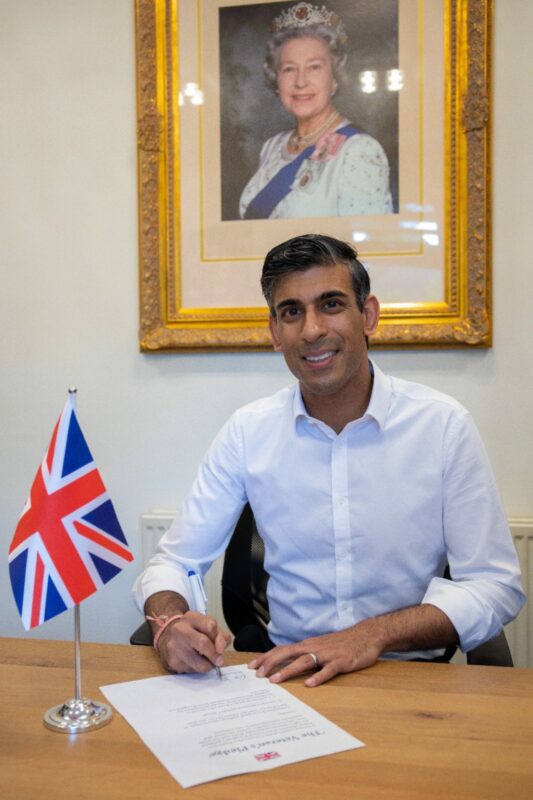





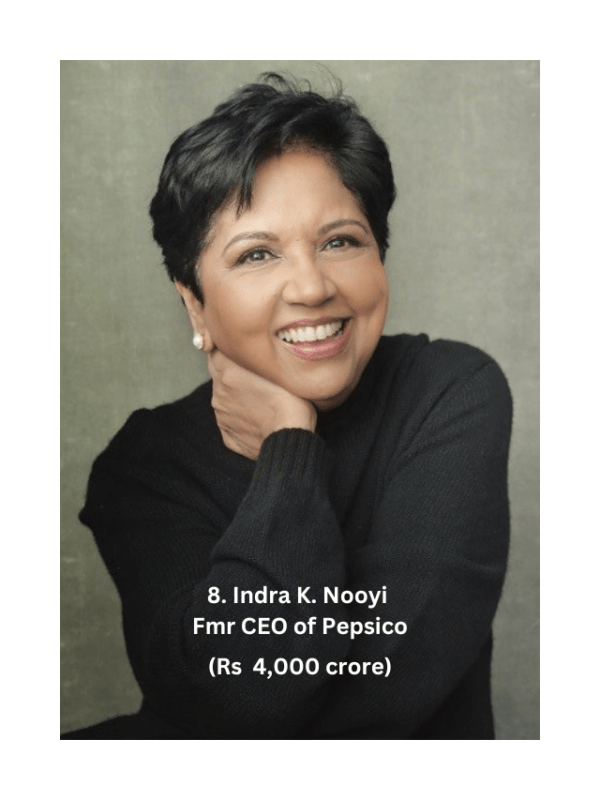


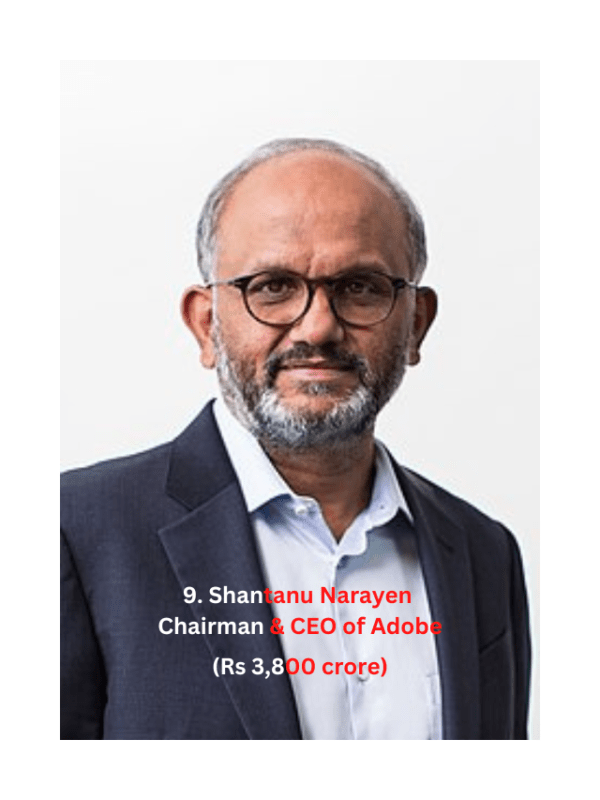


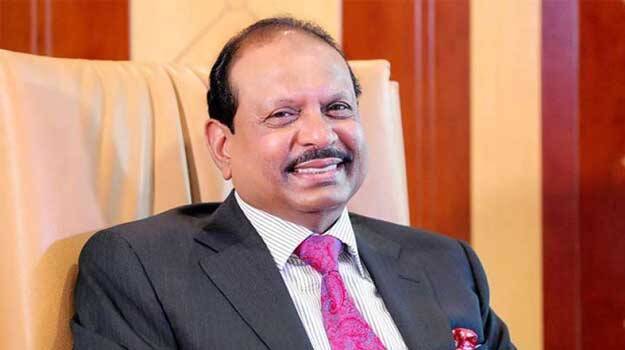


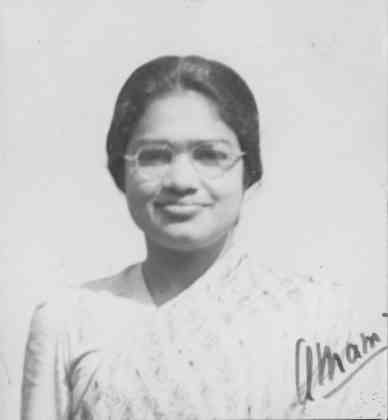
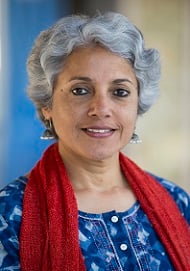

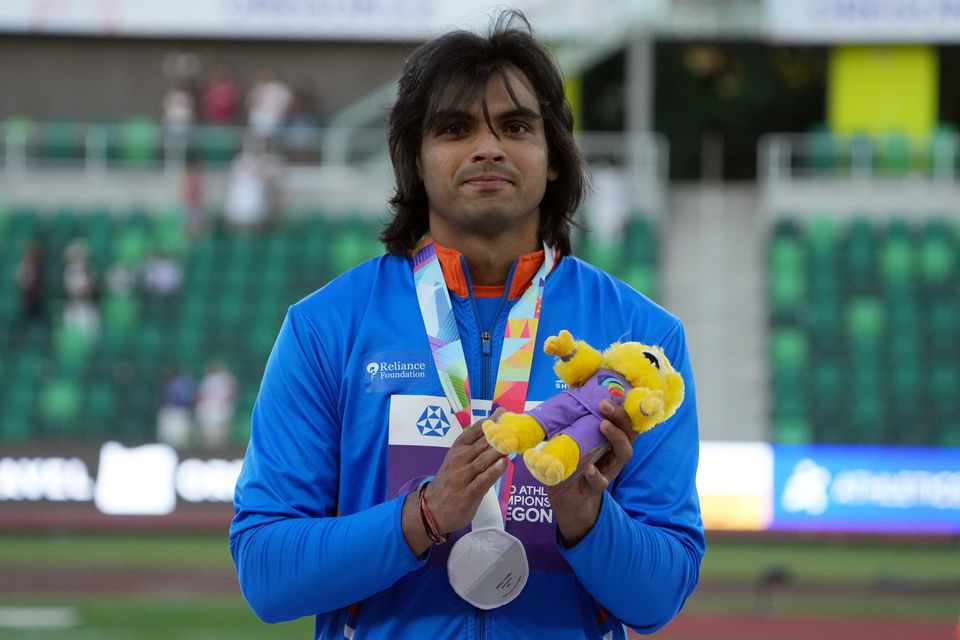





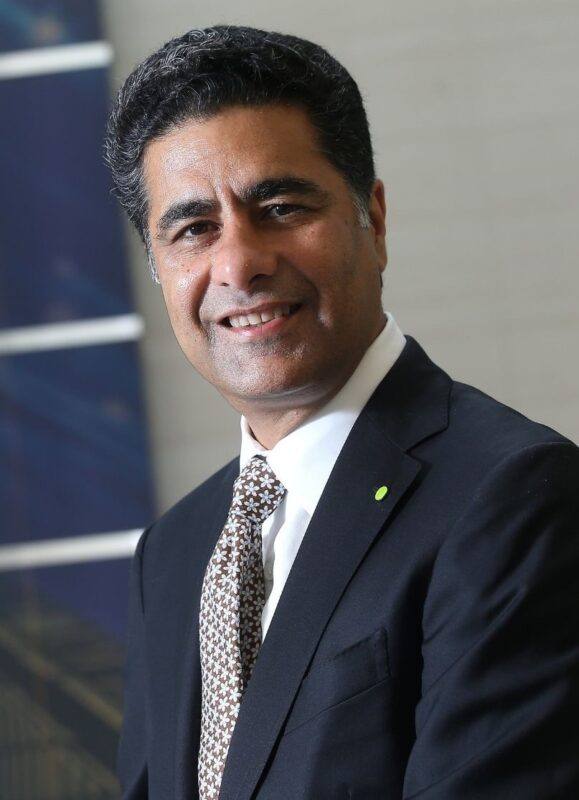
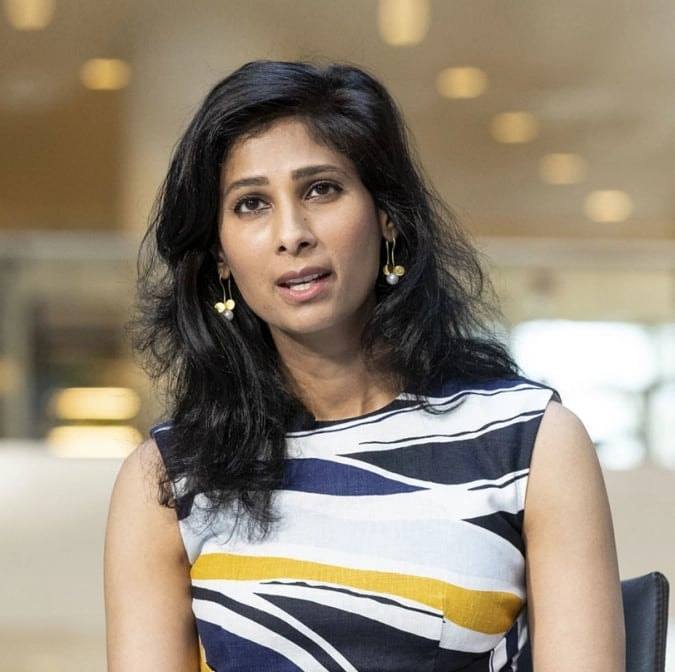

This trend has been noticeable for some time, particularly in the private sector, where Indian-born executives have risen to positions of leadership in major US-based multinational corporations. The most well-known examples are Microsoft CEO Satya Nadella, Alphabet CEO Sundar Pichai, and former PepsiCo CEO Indra Nooyi, but there are many more. According to S&P Global Ratings, CEOs of Indian descent currently lead 58 Fortune 500 companies. This list excludes former Twitter CEO Parag Agrawal, who was fired last month by new owner Elon Musk, and Nooyi, who stepped down in 2018. However, it is still lengthy and diverse, ranging from technology behemoths like Adobe (Shantanu Narayen) and IBM (Arvind Krishna) to coffee behemoths like Starbucks (Laxman Narasimhan).
The majority of the above has appeared on the covers of WFY Magazine’s various editions.
The phenomenon has also made its way into politics. United States Vice President Kamala Harris was born to an Indian mother, and Nikki Haley is the daughter of Indian Punjabi Sikh parents and a former US ambassador to the United Nations. António Costa, whose father was of Indian descent, has been Prime Minister of Portugal since 2015. Due to a rotation agreement, Ireland’s half-Indian former Prime Minister Leo Varadkar is expected to reclaim the premiership later this year. The difficult post-Brexit negotiations between England and Ireland may soon be led by two leaders of Indian origin.
Indian immigrants are more motivated, which is one reason for their success. True, but Indians appear to outnumber other immigrant communities. People of Indian descent have long had the enviable record of earning and maintaining the highest per-capita income among the many nationalities and ethnicities in the United States.
First-generation Indian emigrants have grown up overcoming adversities such as limited resources, heavy-handed government regulation, and bureaucratic inertia. Most have either experienced or witnessed enough deprivation to try to avoid it. They have the “fire in the belly” that many in the West, who were raised in more free and prosperous environments, may have lost.
Furthermore, India’s history and diversity have exposed Indians to people of various languages, religions, and cultures. The practise of adjusting to the “other” is deeply ingrained. As a result, Indian emigrants would feel right at home working for multinational corporations. Growing up in a democratic country has instilled in Indian-born workers habits and values such as self-initiative, critical thinking, and freedom of expression, all of which are typically regarded as assets in the business world. At the same time, respect for hierarchy allows Indians to be perceived as original and creative but “safe,” rather than threatening or revolutionary, a combination that facilitates their acceptance in their new societies and ascension within firms.
Similarly, India’s policy of encouraging diversity and discouraging excess makes it easier for Indians to adapt to competitive environments. Indians benefit from a cultural emphasis on education and learning, close-knit families, and a strong work ethic. Most Indians from middle-class families have probably grown up seeing merit rewarded and striving to earn such praise for themselves.
While such traits are frequently observed in first-generation immigrants, the success of Sunak, Varadkar, and Harris suggests that Indians have passed these traits on to their children. Sunak, in particular, appears to embody the hopes and values of many Indians, who see him as a poster boy for the “New India.”
A new chapter in the Indian Diaspora story
This decade marks a new trend for the Indian Diaspora: as the Indian economy expands, thousands of people return to India to take advantage of increased employment and investment opportunities. Is India, however, capable of effectively reintegrating them into society?
In the twenty-first century, Indians now live in over 140 countries around the world. While some refer to themselves as first-generation Non-Resident Indians (NRIs), others refer to themselves as People of Indian Origin (PIO). There are 12 countries that each have over a million Indians, with four of them having over two million Indians.
As the Indian economy expands, more job and investment opportunities emerge, making India an appealing destination.
As a result, more NRIs and PIOs are returning to India and settling down, primarily for better opportunities in their home country – possibly the largest wave of “return” migration experienced in India.
At the moment, the majority of returning Indians are professionals from the United States and the United Kingdom. The Indian government would be wise to capitalise on their abilities by engaging with them on a more personal level; the public healthcare and development sectors could benefit. A single body and an interactive website that matches an individual’s skill sets with the corresponding area of contribution would aid in synergizing this sector; this, too, could be channelled through the MOIA.
The African Foundation for Development (AFFORD) is a good model to follow because it connects Africans living abroad with non-profits in Africa working toward the same developmental goals.
The Indian Diaspora is also gaining political clout in their adopted countries: the US-India nuclear deal was backed by the Indian Diaspora, which banded together and persuaded senators and congressmen to sign the agreement, demonstrating that the Indian Diaspora can be influential in influencing policies that benefit India. The diaspora has a significant impact at home as well: India’s new venture capital laws were practically written by Indians in Silicon Valley eager to build bridges to Bangalore in the 1990s.
The first step is to make it easy for the Indian Diaspora to return to India; the second step is to make them feel at home. With thousands of Indians returning each year, addressing issues unique to this community is critical.
Conclusion
The Indian diaspora is a large and growing population of people of Indian descent living outside of India. As of 2014, an estimated 16.4 million people of Indian descent lived outside of India, making it the world’s largest diaspora population. The United States (4.3 million), the United Arab Emirates (2.2 million), Saudi Arabia (1.6 million), and the United Kingdom are home to the vast majority of the Indian diaspora (12 million).
Despite their geographical dispersion, the Indian diaspora is bound together by a shared cultural heritage and a sense of Indian identity. This is especially evident in how diaspora members maintain strong ties to India through activities such as keeping up with current events in India, sending money back to family and friends, and celebrating Indian festivals and holidays.
The Indian diaspora’s story is one of perseverance and success in the face of adversity. It’s a story about overcoming adversity with hard work and determination, and eventually finding a place in the world where one can thrive.
It is high time the Indian government consider allowing dual citizenship for Indian origin foreign citizens. In many ways, this would be a game changer.
Keep the door open!




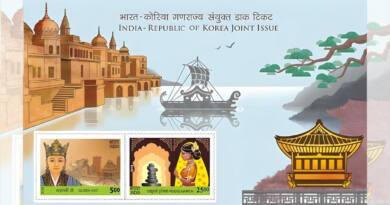
But wanna comment on few general things, The website style and design is perfect, the subject material is very great. “If a man does his best, what else is there” by George Smith Patton, Jr..
Wow, fantastic blog layout! How long have you been blogging for? you make blogging look easy. The overall look of your web site is magnificent, as well as the content!
After all, what a great site and informative posts, I will upload inbound link – bookmark this web site? Regards, Reader.
Some truly terrific work on behalf of the owner of this website , perfectly great written content.
I truly value your work, Great post.
Awesome website you have here but I was curious about if you knew of any forums that cover the same topics talked about in this article? I’d really love to be a part of online community where I can get feed-back from other experienced people that share the same interest. If you have any suggestions, please let me know. Thank you!
epoxy
Hiya, I’m really glad I’ve found this information. Today bloggers publish just about gossips and internet and this is really annoying. A good website with exciting content, this is what I need. Thank you for keeping this website, I will be visiting it. Do you do newsletters? Can not find it.
Wow, fantastic blog layout! How long have you been blogging for? you made blogging look easy. The overall look of your site is wonderful, let alone the content!
I really enjoy looking through on this internet site, it has great content. “The living is a species of the dead and not a very attractive one.” by Friedrich Wilhelm Nietzsche.
Yay google is my queen helped me to find this outstanding web site! .
This is a very good tips especially to those new to blogosphere, brief and accurate information… Thanks for sharing this one. A must read article.
Hi there, just was aware of your blog thru Google, and found that it’s truly informative. I’m gonna be careful for brussels. I will appreciate in case you continue this in future. Numerous folks will likely be benefited from your writing. Cheers!
Undeniably consider that which you said. Your favorite reason seemed to be on the web the easiest thing to bear in mind of. I say to you, I definitely get annoyed whilst people consider concerns that they just don’t recognise about. You controlled to hit the nail upon the highest and also defined out the whole thing without having side effect , other folks can take a signal. Will likely be again to get more. Thank you
Terrific paintings! That is the type of info that are meant to be shared around the net. Shame on the search engines for now not positioning this put up upper! Come on over and seek advice from my web site . Thank you =)
Hello.This post was extremely remarkable, particularly since I was looking for thoughts on this matter last couple of days.
Outstanding post however I was wanting to know if you could write a litte more on this topic? I’d be very thankful if you could elaborate a little bit further. Thank you!